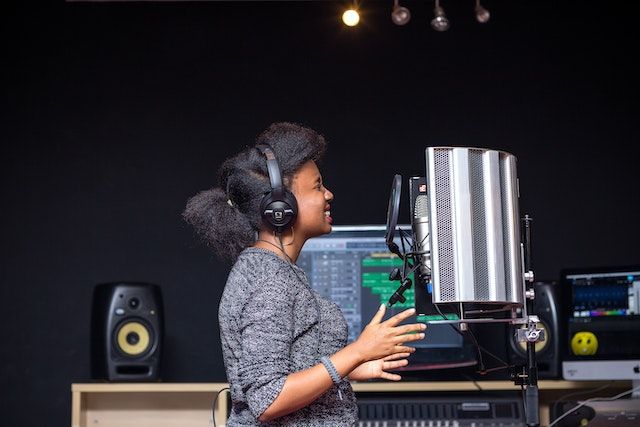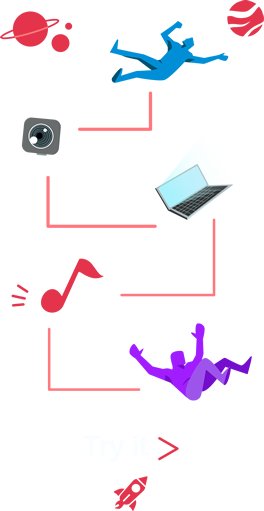Vocal resonance: definition and best exercise to improve it
Reed instruments (clarinet, oboe, flute, etc.) make effective use of resonance, making them loud enough to be heard over a full string orchestra. However, if you take out the reed—a little piece of wood—the instrument can no longer project.
Similar to this, the voice is audible over an orchestra as well, even a full one with additional brass and reed instruments. The capacity of the voice to produce sound is significantly diminished if the vocal chords are removed.
As a result, some individuals might feel that the vocal chords themselves hold the key to producing loud sounds, although resonance is actually the secret. Let’s see together what resonance is and how you can improve it for your voice. Let’s start!
What is vocal resonance?
Resonance may be seen as yelling or clapping in a tunnel or a vacant school gym, producing an echo effect. Acoustic resonances, or vibrations in the air molecules caused by your clapping, travel through space and reflect off the reflective surfaces of the walls.

Sound is amplified through resonance, and resonance modifies the voice's color and timbre by emphasizing certain vocal traits over others. Certain resonators make the singer's tone brilliant, while others make it warm. All of these raise the total volume, and the body reflects and amplifies the sound, much like a well-designed performance hall.
The vocal fold (or vocal cord) contains a coating of flexible, gelatinous-appearing mucosal tissue on its surface that aids in appropriate vocal cord vibration. For vocalists to maintain this layer functioning at its best, water is crucial.
Our two vocal folds, or vocal cords, vibrate when there is a passage of air (breath support) through them, creating a buzzing sound similar to a trumpet player's lips.
Where does vocal resonance occur?
The vocal tract, a tube made up of the throat, mouth (oral cavity), soft palate region, and, to a lesser degree, the nasal cavity, serves as our reflecting resonance chamber.

The human voice is made up of tiny, buzzy noises produced by the vocal cords that are amplified (or resonated) in the vocal tract. Our particular vocal tract shapes will contribute to the quality of our voice.
We also get some of the sound waves that pass below our soft palate and into the nasal cavity. The timbre or tonal quality will be negatively impacted if too much sound energy enters the nasal cavity, producing a "nasal sound".
For a satisfying timbre and tone quality, the resonance chamber's size and form are essential.
To have a successful resonator, we must regulate and correctly adjust the vocal tract's form. In this effort, singers are mostly guided by music and sensations. Sympathetic vibrations will be produced by balanced resonance, and they will come with a variety of accompanying sensations.
We can manage the vocal resonators by being aware of these sensations, which enables us to produce voices with more strength, resonance, balance, tone, range, and stability.

You may have heard the words "chest voice" and "head voice" from a vocal instructor. These are "sensational" words that are used to describe the singing voice rather than the actual singing. Sympathetic resonance. or sympathetic vibrations are the terms used to describe these feelings or vibrational sensations.
More considerable levels of vibration or vocal tone occur in the singing resonance type. For instance, the throat vibrates more or amplifies the voice more while speaking in a chest voice. This amplification shifts to the mouth region while speaking in a head voice.
Singing resonance exercises
Humming exercises
Vowel exercises
Vocal resonance - Conclusion
Voice resonance enhances articulation, projection, and vocal beauty. Learning resonance is similar to learning to skate or ride a bike: the technique may take some time to master, but once mastered, it cannot be forgotten.
If you liked this post and would want to read more tips for your music career and general information about the music industry, please visit our blog section.
You're here because you love music, so please try to listen to it together with your friends or strangers, at the same time, connected by webcam in CalypsoRoom.
In CalypsoRoom we believe music is the most powerful tool to bring people together, and for this reason, we developed an online music social network where you can connect with friends or strangers while listening to music simultaneously, connected via webcam.
Are you a music artist or label and do you want to give your music a further dimension? Do you own or co-own the master and publishing rights to your music? If yes, consider to post it on CalypsoRoom: it’s free, you keep 100% of your copyright, you promote your music in a new way, and you get a new revenue stream! Check it out.
Thanks for reading,
CalypsoRoom Team
back
Written by CalypsoRoom Editorial Team
The CalypsoRoom Editorial Team is a skilled and diverse group of writers, researchers, and industry specialists who have access to Calypso's data and information in order to give you broad knowledge about the music industry as well as helpful advice to help you manage your music and dancing career.
Updated January 2023
Company number: 681223
James's Walk 31, Dublin, Ireland
contact@calypsoroom.com
+353 (89) 435 8928





